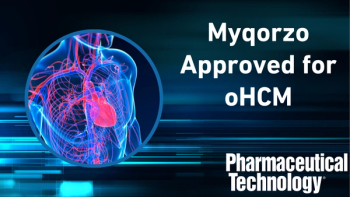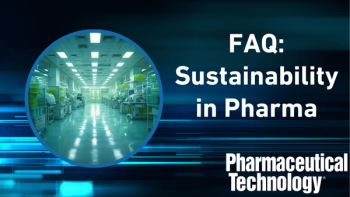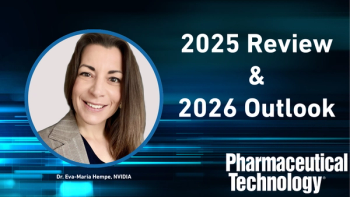
- Pharmaceutical Technology-04-02-2013
- Volume 37
- Issue 4
The Need for Pharmacopeial Harmonization
In the context of international trade, the need to develop global quality standards for medicines is increasing.
Susanne Keitel, PhDQuality standards are vital instruments in the context of marketing authorization and market surveillance, and they facilitate free movement and trade of medicines among countries and regions. The European Pharmacopoeia (Ph. Eur.) has always been at the forefront of the harmonization of quality standards. Indeed, almost 50 years ago, the “founding fathers” of the Convention on the elaboration of a European pharmacopoeia had already identified the need to harmonize quality requirements for medicinal products on the European market. They also acknowledged the difficulties in retrospective harmonization and so decided to begin establishing the Ph. Eur. by focusing on substances for which there were no existing standards in member states. The Convention was signed by eight countries in 1964 and, today has 38 signatory parties—37 states and the European Union. The success of this pan-European undertaking and its impact on a global scale is demonstrated by the 24 observers to the Convention, comprised of 23 countries from all around the world and the World Health Organization (WHO). The positive experience gained in prospective harmonization and the trust and mutual confidence developed between participants in the early years has, in the meantime, also been translated into retrospective harmonization. Today, topics that are of interest to more than one member state end up on the work program of the European Pharmacopoeia Commission, regardless of whether or not a national standard already exists.
A changing industry
Since the establishment of the European Pharmacopoeia in the 1960s, the world, and with it the pharmaceutical industry, has changed significantly. International harmonization among the three pharmacopoeias of Europe, Japan, and the United States (i.e., the three regions that started the International Conference on Harmonisation of Technical Requirements for Registration of Pharmaceuticals for Human Use [ICH]) was, therefore, a logical development. Harmonization activities among the European, Japanese, and US pharmacopoeias began in 1989 with the establishment of the Pharmacopoeial Discussion Group (PDG); an informal harmonization initiative between these pharmacopoeias parallel to ICH. In fact, it was a prerequisite for the ICH Steering Committee to agree on the elaboration of the ICH Guideline Q6A Specifications: Test Procedures and Acceptance Criteria for New Drug Substances and New Drug Products that the PDG committed to harmonizing the 11 general methods referred to in the document at that time and not to make unilateral changes once harmonization was complete. The ICH Q6A guideline includes a specific reference to the work of the PDG in chapter 2.8 “Pharmacopoeial Tests and Acceptance Criteria.”
Where harmonization of general chapters is carried out, the aim is to arrive at interchangeable methods or requirements so that demonstration of compliance using a general chapter from one of the three pharmacopeias implies that the same result would be obtained using the general chapter of any of the other two PDG pharmacopeias. However, the activities of the PDG in harmonizing general methods have not been limited to the Q6A methods; a wide range of general methods (35) has since been added to the work program. These include methods, such as chromatography, that are crucial for the quality control of medicines and a prerequisite for further harmonization of specific monographs. Besides the harmonization of general methods, the PDG has also been working on monographs for widely used excipients. Currently, 62 such excipients are included in its work program. Clearly, the purpose of harmonizing a monograph is to arrive at identical requirements for all attributes of the product in question.
To date, 28 of the 35 general methods and 43 of the 62 excipient monographs have been harmonized. Detailed information on the work program of the PDG is published in Pharmeuropa and the respective forums of the other two PDG pharmacopeias. In addition, the Ph. Eur. contains a specific General Chapter 5.8., Pharmacopoeial harmonization, that provides more information on the outcome of harmonization. This chapter was revised by the Ph.Eur. Commission in November 2012 to provide further support to users by highlighting information on any nonharmonized attributes/provisions and on any local requirements (i.e., attributes that are present only in the Ph. Eur. text). Non-harmonized attributes/provisions are placed between black diamonds in the corresponding Ph. Eur. texts, and the local requirements are marked by white diamonds ().
The PDG has often been criticized of slow progress. However, it has to be acknowledged that the three pharmacopeias have differing legal statuses; the Japanese Pharmacopoeia is part of the Japanese government’s Ministry of Health, Labour and Welfare; the European Pharmacopoeia is part of the Council of Europe (an inter-governmental organization); while the US Pharmacopeia Convention (USP) is a private, not-for-profit organization that is independent of the US government. In addition, all three are embedded in their specific national/regional regulatory frameworks that, after more than 20 years of activity at the ICH level, are only partially harmonized.
Harmonization of APIs
In addition to PDG activities, Ph. Eur. and USP have initiated a bilateral pilot project on the prospective harmonization of monographs for APIs. So far, this project covers four substances that were still under patent at the time monograph elaboration was initiated and it has been run in close collaboration with two sponsors. All four monographs have now been adopted by the respective governing bodies of the Ph. Eur. and USP. Together with the sponsors, the two pharmacopeias have decided to extend the pilot phase to cover the revisions of these first four monographs to ensure a robust procedure is in place before a final decision is taken on the future process. In the meantime, the Japanese Pharmacopeia has also voiced its interest in participating in the project.
Since the setting up of the PDG and ICH, the industrial environment has changed. It is evident that harmonization between the three ICH regions is no longer sufficient in today’s world, where a high percentage of APIs come from outside Europe, Japan, and the US. Up to 80% of the volume of APIs used in the production of medicines for the European market come from India and China, with the cited figures varying depending on the source of data. The European Pharmacopoeia, therefore, is also actively involved in a number of other international harmonization projects; the most promising of which is the recent WHO initiative.
Good pharmacopeial practices
In early 2012, the WHO convened the pharmacopeias of the world for their first international meeting in Geneva. Representatives of 23 pharmacopeia secretariats from 21 countries, the EDQM/Council of Europe, and the WHO used the opportunity to exchange views on experiences, policies, and challenges. The discussions clearly identified the need to strengthen collaboration among pharmacopeias worldwide. Based on the experience and challenges with existing harmonization initiatives (such as the PDG) that focus on retrospective harmonization, it was acknowledged that new platforms open to all pharmacopeias who wished to participate would need to be identified for a global pharmacopeial harmonization process. However, any platform would need to respect that each pharmacopeia operates within a national or regional legal and regulatory framework. Hence, the main emerging proposal has been the development of Good Pharmacopeial Practices; a guidance document that would describe harmonized policies and approaches to monograph development, collaboration between pharmacopoeias, and interactions with stakeholders. Good pharmacopeial practices are intended to favor and facilitate future collaboration, work-sharing, and prospective harmonization between participating pharmacopeias.
The WHO has been asked to facilitate the elaboration of these good pharmacopeial practices under the auspices of its Expert Committee on Specifications. An initial drafting group has been formed, comprising representatives from Argentina, Brazil, the Ph.Eur., India, Japan, Mexico, Russian Federation, Ukraine, and USP, with editorial assistance being provided by the United Kingdom. As a truly global initiative, the entire process will be open to all pharmacopeias. A follow-up meeting, organized jointly by the WHO and the Fédération Internationale Pharmaceutique (FIP) in October 2012 in Amsterdam, gave the opportunity to the pharmacopeias to present this proposal to stakeholders and to collect feedback. As a consequence of this discussion, a second closed international meeting of world pharmacopeias is now planned to take place in India in April 2013, hosted by the Indian Pharmacopoeia Commission and co-organized with the WHO.
Preparation of a first draft of the Good Pharmacopoeial Practices guidance document as a basis for substantial discussions and progress at this meeting is well under way, with pharmacopeias from different continents sharing the work. The Ph. Eur. Commission supports these developments, which will help the pharmacopeias of the world to agree on harmonized, scientifically sound approaches and policies to ensure the quality of medicines for the benefit of patients around the world.
Articles in this issue
over 12 years ago
Strategic Partnering for Manufacturingover 12 years ago
Advancing Flow Chemistry in API Manufacturingover 12 years ago
Report from Latin Americaover 12 years ago
Fine-Chemical Producers Make Targeted Investmentsover 12 years ago
Evaluating Equipment Utility and Innovationover 12 years ago
Previewing Packaging Innovationsover 12 years ago
Method Validation by Design to Support Formulation Developmentover 12 years ago
Bio/Pharmaceutical Facility Design and Operation: A PrimerNewsletter
Get the essential updates shaping the future of pharma manufacturing and compliance—subscribe today to Pharmaceutical Technology and never miss a breakthrough.




